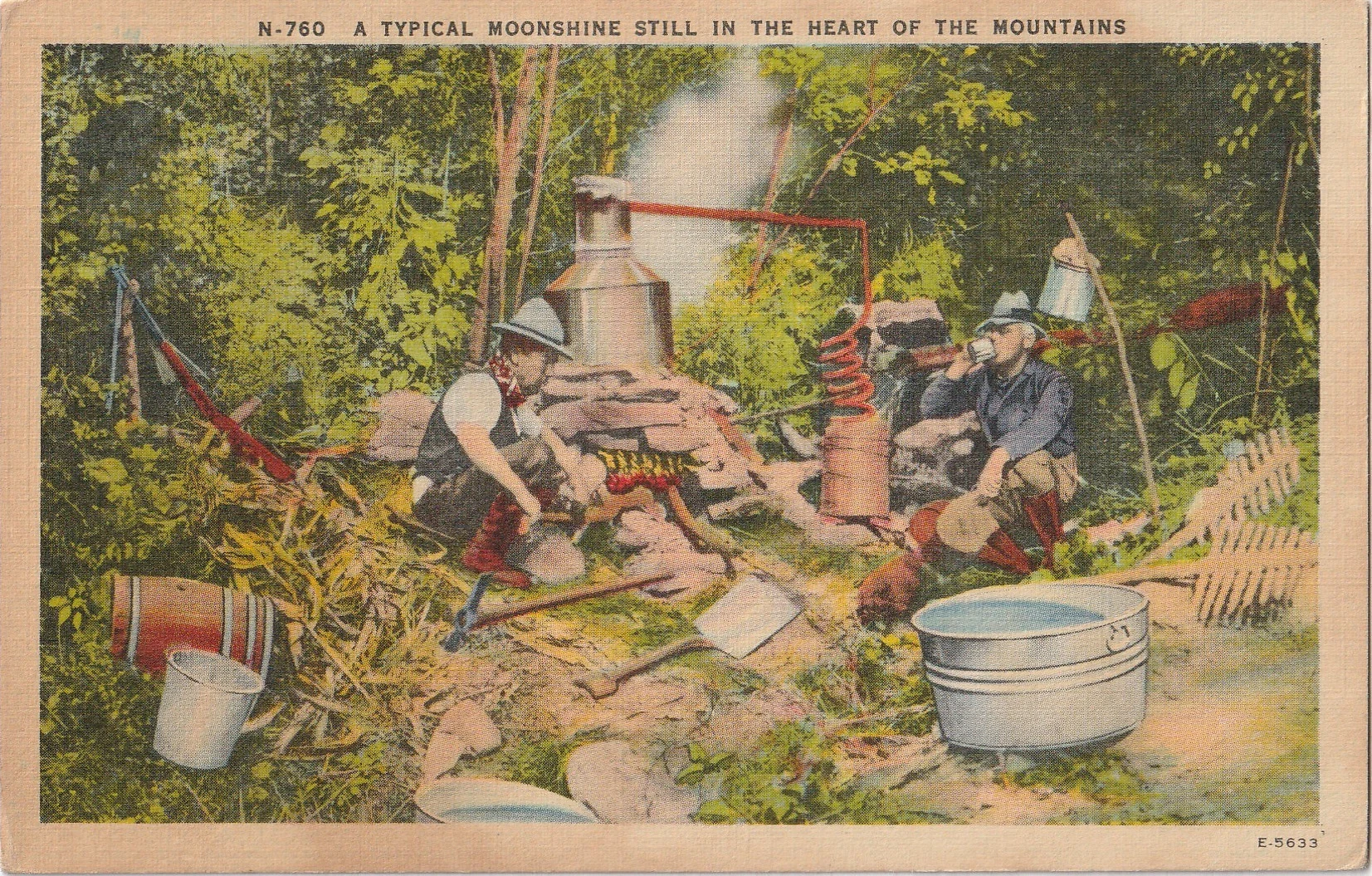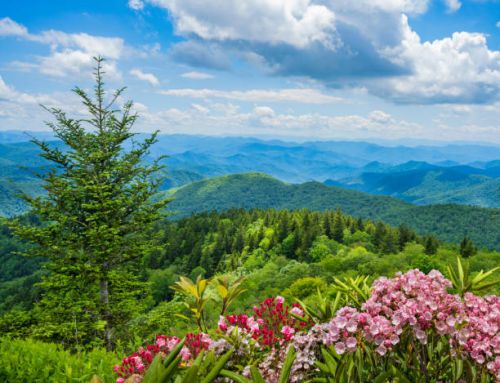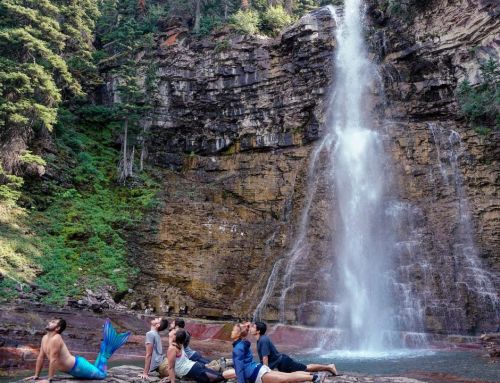White lightning liquor, also known as moonshine, is a type of high-proof distilled spirit that has a rich history in the Great Smoky Mountains region of the southeastern United States. Its name is derived from the fact that it was often produced and sold illegally under the cover of darkness.
The term “moonshine” is more commonly used to refer to illegally distilled spirits in general, while “white lightning” is a specific type of moonshine that is known for its high potency and clear color. “White lightning” is often associated with the Appalachian region of the United States, including the Great Smoky Mountains, where moonshining has a long and storied history in many regions. However, the terms “moonshine” and “white lightning” are sometimes used interchangeably depending on the region and context.
The origins of moonshine can be traced back to the 18th century when farmers in the Smoky Mountains began distilling corn mash in order to make a cheap and potent form of alcohol. The drink became increasingly popular during Prohibition when the sale and consumption of alcohol were banned nationwide.
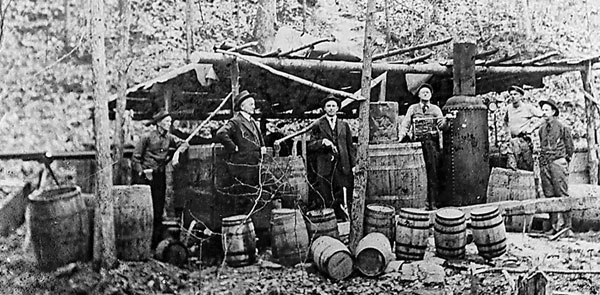 In the 18th century, farmers in America had limited access to books, scientific studies, or formal education on distilling. Instead, they learned the craft through practical experience and trial and error. Distilling was a common practice for Scots-Irish immigrant farmers as it was an efficient way to convert surplus crops into valuable commodities. Farmers would ferment a mash of corn, water, and yeast in large wooden barrels, then distill it in small copper or brass stills over an open fire. The process was often carried out at night, in secluded areas, to avoid detection by the authorities who taxed and regulated the production and sale of spirits.
In the 18th century, farmers in America had limited access to books, scientific studies, or formal education on distilling. Instead, they learned the craft through practical experience and trial and error. Distilling was a common practice for Scots-Irish immigrant farmers as it was an efficient way to convert surplus crops into valuable commodities. Farmers would ferment a mash of corn, water, and yeast in large wooden barrels, then distill it in small copper or brass stills over an open fire. The process was often carried out at night, in secluded areas, to avoid detection by the authorities who taxed and regulated the production and sale of spirits.
Knowledge of distilling techniques was passed down through generations of families and communities, with each distiller developing their own unique recipes and methods. There is evidence to suggest that Cherokee natives directly helped immigrant farmers learn how to distill corn into moonshine, as this was not common in Europe. It is known that the Cherokee people had a long history of cultivating corn and using it for various purposes, including making a fermented corn beverage called tiswin. It is possible that early settlers in the Appalachian region observed the Cherokees’ use of corn and adapted their methods to create moonshine. Additionally, there may have been a cultural exchange between the settlers and Cherokee that could have included knowledge about corn cultivation and processing. However, the exact origins of corn mash distillation for moonshine are difficult to trace and likely developed over time through experimentation and trial-and-error among early settlers.
White lightning, the high-proof moonshine, typically has a higher alcohol content than regular moonshine. This is achieved by using a higher percentage of corn in the mash, which increases the sugar content and ultimately results in a higher alcohol yield during the distillation process. Additionally, the distillation process may be repeated several times to increase the alcohol concentration.
To make a high-proof moonshine, the first step is to create a mash using ingredients such as cornmeal, sugar, and water. The mash is then fermented with the addition of yeast, which converts the sugar into alcohol. Once fermentation is complete, the mash is distilled in a still to remove impurities and concentrate the alcohol. The resulting distillate, or “white dog,” is then further distilled to increase the alcohol content. This process can be repeated several times until the desired alcohol concentration is achieved.
While the practice of distilling corn mash was widespread in rural areas, it was considered illegal and remained so until the introduction of licensed distilleries in the late 19th century.
Moonshiners in the Smoky Mountains often operated in secret, using remote mountain locations to conceal their stills and evade law enforcement. There are many famous moonshiners who have become legends in their own right. Here are a few notable examples:
- Popcorn Sutton – perhaps the most famous moonshiner of all time, Sutton was known for his homemade stills and his colorful personality. He wrote a book about his experiences called “Me and My Likker” and was the subject of a documentary film called “The Last One.”
- Amos Owens – known as “The King of the Moonshiners,” Owens was a legendary figure in the Smoky Mountains during the 1920s and ’30s. He was known for his high-quality moonshine and his ability to evade the law.
- Willie Clay Call – another famous moonshiner from the Smoky Mountains, Call was known for his high-proof moonshine and his ability to outrun the law. He operated in the early 1900s and was a member of the notorious “White Caps” gang.
- Tom Colvin – a legendary moonshiner from Cocke County, Tennessee, Colvin was known for his high-quality moonshine and his
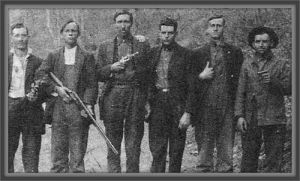 ability to stay one step ahead of the law. He was also known for his incredible strength and his ability to carry large loads of moonshine through the mountains.
ability to stay one step ahead of the law. He was also known for his incredible strength and his ability to carry large loads of moonshine through the mountains. - Andy Orr – Andy Orr was a notorious moonshiner from Graham County, NC, who led a gang of violent individuals that ruled the logging camps and small communities of western North Carolina. He openly produced and sold large volumes of liquor and killed at least seven men. Orr was finally captured and convicted of his crimes in 1917 and died in a federal prison in Tennessee in 1931.
Moonshining was predominantly a male-dominated industry, but there were a few notable women moonshiners in the Smoky Mountains. Some of the more famous were:
- “Popcorn” Sutton’s wife, Pam Sutton, continued her husband’s legacy after his death. Sutton was known for her apple and peach brandies, as well as her straight corn whiskey.
- “Ma” Walker, operated in the late 1800s and early 1900s in the mountains of North Carolina. She was known for her high-quality moonshine and her ability to evade the law.
- Wilma Dykeman, who wrote about moonshining in her book “The French Broad,” and
- Nellie Louella Payne, who was known as the “Moonshiner’s Daughter” ran her own moonshine operation in Tennessee.
New Breed of Moonshine Distillers – Legal
Today, a new breed of distillers has emerged in the Smoky Mountains, bringing the tradition of moonshine-making into the 21st century. These distillers are operating legally and are creating high-quality spirits using modern equipment and techniques. Here are a few examples of legal distilleries that produce moonshine:
Troy & Sons Distillers: Based in Asheville, North Carolina, Troy & Sons Distillers specializes in producing moonshine made from 100% heirloom corn.
Howling Moon Distillery: Howling Moon Distillery is located in Asheville, North Carolina, and produces a variety of moonshines, including corn whiskey and apple pie moonshine.
Blue Ridge Distilling Co.:Blue Ridge Distilling Co. is based in Bostic, North Carolina, and produces a moonshine called Defiant Whisky, made from locally sourced corn.
Ole Smoky Moonshine: Located in Gatlinburg, Tennessee, Ole Smoky Moonshine is one of the most well-known legal moonshine distilleries in the country. They offer a range of flavors, including apple pie, peach, and hunch punch.
Sugarlands Distilling Company: Also based in Gatlinburg, Sugarlands Distilling Company produces a variety of moonshine flavors, as well as whiskey and rum. They have won numerous awards for their products.
Old Forge Distillery: Located in Pigeon Forge, Tennessee, Old Forge Distillery produces moonshine, whiskey, and other spirits using locally sourced ingredients. They offer several moonshine flavors, including apple pie, peach cobbler, and blackberry.
Smith Creek Moonshine: Based in Pigeon Forge, Smith Creek Moonshine produces a variety of moonshine flavors, including peach, apple pie, and blackberry. They also offer tours of their distillery.
Doc Collier Moonshine: Located in Gatlinburg, Tennessee, Doc Collier Moonshine produces small-batch moonshine using traditional methods. They offer several flavors, including their signature “shine,” which is made with corn, rye, and barley.
Call Family Distillers: located in Wilkesboro, NC, Call Family a family-owned distillery that uses locally sourced ingredients to produce a range of spirits, including whiskey, moonshine, and vodka. Their flagship product is the Defiant Whisky, which is aged for at least 8 years in charred oak barrels.
Chemist Spirits: A craft distillery based in Asheville, NC, Chemist specializes in producing small-batch gin, whiskey, and brandy. Their distilling process is inspired by the scientific principles of chemistry, and they use local and organic ingredients whenever possible to create unique flavor profiles.
Copper Barrel Distillery: located in North Wilkesboro, NC, offers a range of handcrafted spirits, including moonshine, whiskey, and gin. Their moonshine is made using an old family recipe and is available in a variety of flavors, including apple pie, peach cobbler, and blackberry.
Cultivated Cocktails Distillery is a farm-to-flask distillery located in downtown Asheville, NC. They produce a variety of spirits, including gin, vodka, and whiskey, using locally sourced grains and botanicals.
Mayberry Spirits Distillery, located in Mount Airy, NC, is a family-owned distillery that produces a range of spirits, including whiskey, moonshine, and gin. Their flagship product is the White Lightning Moonshine, which is made using a secret family recipe.
Oak and Grist Distilling Company, located in Black Mountain, NC, specializes in producing small-batch whiskey and rum using traditional distilling methods. They use locally sourced grains and fruits to create unique flavor profiles.
Southern Distilling Company, located in Statesville, NC, is a whiskey distillery that produces a range of handcrafted spirits, including bourbon, rye, and single malt whiskey. They offer tours and tastings, as well as a range of merchandise in their gift shop.
South Mountain Distilling Company, located in Rutherfordton, NC, is a small-batch distillery that produces a range of spirits, including whiskey, moonshine, and gin. They use locally sourced grains and fruits to create unique flavor profiles, and offer tours and tastings at their distillery.
It’s important to note that while these distilleries produce legal moonshine, they do not typically produce the high-proof, illicit moonshine known as “white lightning.” You still have to find an outlaw for that.
Despite the change in how it’s produced, white lightning liquor remains a beloved part of the culture and history of the Great Smoky Mountains. Visitors to the area can sample moonshine at local distilleries and learn about its fascinating past. So whether you’re a history buff, a spirits connoisseur, or simply looking for a taste of the Smoky Mountains, white lightning liquor is definitely worth exploring.
To learn more about Moonshine in the Great Smoky Mountains, check out the Gateway to the Smokies podcast with Joseph McElroy.

